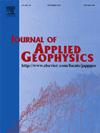An efficient footprint-guided finite domain algorithm for common offset ground penetrating radar forward modeling
IF 2.2
3区 地球科学
Q2 GEOSCIENCES, MULTIDISCIPLINARY
引用次数: 0
Abstract
Ground penetrating radar (GPR) is a widely applied shallow geophysical exploration method. However, the huge amounts of collected data from high efficiency and sampling rate are extremely time-consuming and high-cost to interpret. As the basis of full waveform inversion (FWI) and reverse time migration (RTM), the numerical simulation of GPR directly affects the accuracy and speed of the data interpretation. Besides, calculating 3D large-scale models on the personal computer (PC) is still difficult with limited memory. Therefore, an efficient and low-cost forward algorithm is required urgently. Inspired by the footprint of the airborne electromagnetic method (AEM), we propose a GPR moving finite domain (MFD) forward algorithm based on the attenuation characteristic of GPR high frequency electromagnetic waves to avoid excessive computation by limiting the calculation to the finite domain. We explore the relation between speedup and precision, summarize the optimal range of the parameter and constrain the MFD to further ensure the acceleration according to the time window. The error source and factors affecting the algorithm's speedup are explored and discussed to demonstrate its performance fully. The extensive numerical experiments emphasize that the algorithm could improve speed efficiently with ignorable loss of accuracy. Finally, the forward modeling of a large 3D model is carried out with the memory decreased by 78 % and the speed increased by 33.88 times on the PC, which is impossible through the conventional FDTD. The reduction of costs lessens the requirements for computer equipment, which is expected to promote the practical process of FWI and RTM.
求助全文
约1分钟内获得全文
求助全文
来源期刊

Journal of Applied Geophysics
地学-地球科学综合
CiteScore
3.60
自引率
10.00%
发文量
274
审稿时长
4 months
期刊介绍:
The Journal of Applied Geophysics with its key objective of responding to pertinent and timely needs, places particular emphasis on methodological developments and innovative applications of geophysical techniques for addressing environmental, engineering, and hydrological problems. Related topical research in exploration geophysics and in soil and rock physics is also covered by the Journal of Applied Geophysics.
 求助内容:
求助内容: 应助结果提醒方式:
应助结果提醒方式:


